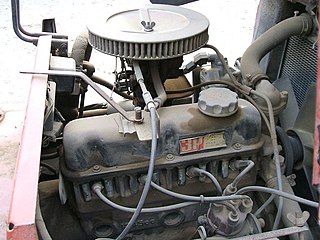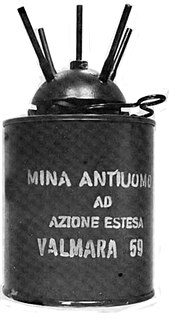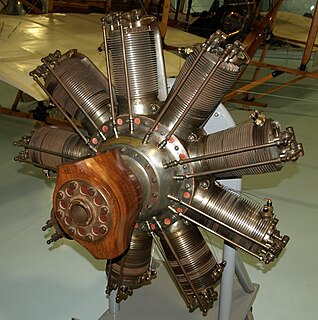
A PT boat was a torpedo-armed fast attack vessel (MTB) used by the United States Navy in World War II. It was small, fast, and inexpensive to build, valued for its maneuverability and speed but hampered at the beginning of the war by ineffective torpedoes, limited armament, and comparatively fragile construction that limited some of the variants to coastal waters.

The PT-76 is a Soviet amphibious light tank that was introduced in the early 1950s and soon became the standard reconnaissance tank of the Soviet Army and the other Warsaw Pact armed forces. It was widely exported to other friendly states, like India, Iraq, Syria, North Korea and North Vietnam. Overall, some 25 countries used the PT-76.

The Toyota P family is an inline-four engine produced from October 1959 through 1994. Originally fitted to the Corona passenger car, it was soon relegated to commercial use vehicles and for its latter two decades it mostly powered various forklifts.

The National Development Complex (NDC) is a Pakistani defence and aerospace contractor and a division under the National Engineering and Scientific Commission (NESCOM). Founded in 1990 at the MoD, the NDC engaged in research and development in space-based missile systems and expanded its services towards developing the land-based weapons systems for the army as well as naval systems for the navy.

The RM-70 multiple rocket launcher is a Czechoslovakian army version and heavier variant of the BM-21 Grad multiple rocket launcher, providing enhanced performance over its parent area-saturation rocket artillery system that was introduced in 1971.
The PT Mi-Ba-II is a large Bakerlite cased Czechoslovakian anti-tank blast mine. The mine is unusual in that it has two plunger fuses instead of a pressure plate. The plunger fuses give the mine resistance to overpressure, also the plastic body makes it difficult to detect.
The PT Mi-Ba-III is a large Bakelite cased circular Czechoslovakian anti-tank blast mine. It is no longer produced but it is found in Angola, Kuwait, Mozambique, and Namibia. A Bulgarian copy of the mine, the PMT-BA-III exists.
The PT Mi-K is a Czechoslovakian metal-cased anti-tank blast landmine. The mine uses a metal grid instead a pressure plate, this gives it resistance to overpressure. The mine is no longer produced, but is found in Afghanistan, Cambodia, Eritrea, Namibia, Nicaragua and the Western Sahara.

The M19 is a large square plastic cased United States anti-tank blast mine. Intended to replace the M15 mine, the design dates from the mid-1960s and contains only two metal components: the copper detonator capsule and a stainless steel firing pin which weighs 2.86 grams. It is a minimum metal mine, which makes it very difficult to detect after it has been emplaced. This mine is produced under licence in Chile, South Korea and Turkey. A copy is produced in Iran. It is found in Afghanistan, Angola, Chad, Chile, Cyprus, Iran, Iraq, Jordan, South Korea, Lebanon, the Western Sahara, and Zambia.

The Valmara 59 is a large cylindrical Italian bounding anti-personnel mine. It is the first in the "Valmara" family of mines produced by Valsella Meccanotecnica, and was followed by the Valmara 69 and VS-JAP. The mine's body is metal with a distinctive five-pronged head. The central prong has a hole, to allow the threading a trip wire. The inner body of the mine has a main charge surrounded with approximately 1,000 steel cubes, below which is a steel wire connecting it to the base of the mine. When the mine is triggered a small charge launches the mine into the air approximately 45 cm before the steel wire is pulled taut, the jolt of which pulls a striker into the detonator. A secondary time fuse triggers the mine after three seconds if it has not detonated after being triggered.
The No 7 Mk 1 Dingbat mine is a British anti-personnel blast mine. The mine has a steel body, with a flexible pressure pad on the top surface. Under the pressure pad is a belleville spring with a central striker. The fuse is slid into the side of the mine, a firing pin prevents the fuse being fully inserted until it is removed. The mine was intended to be scattered mechanically, and a number of systems were tested to scatter it. However, none were accepted into service, so the Dingbat mine was hand laid instead. The mine came with a small fabric cover to help hide it.
The PT Mi-Ba is a circular Bakelite cased Czechoslovakian minimum metal anti-tank blast mine. The mine entered service with the Czech and Slovakian armies in the 1950s and is now obsolete and no longer in service. The mine is conventional in layout with a central pressure plate, and doughnut-shaped main charge around a booster charge and RO-7-II fuze. The mine's fuze is the only component that contains any metal, and this is limited to a spring, the striker pin, and the detonator capsule.
The PT Mi-U is a circular Czech anti-tank mine with a Misznay Schardin effect warhead. It can be used with a conventional pressure fuze or a tilt rod fuze.
The PT Mi-P is a large Czechoslovakian anti-tank mine. The mine is a large hemisphere, with a carrying handle and an RO-9 attachment for a tilt rod on one side. It uses a large shaped charge warhead that uses a five millimeter thick steel liner, and can penetrate up to 150 millimeters of armour. The mine was in service with the armies of the Czech Republic and Slovakia, but is now obsolete.

The Clerget 9B was a nine-cylinder rotary aircraft engine of the World War I era designed by Pierre Clerget. Manufactured in both France and Great Britain, it was used on such aircraft as the Sopwith Camel. The Clerget 9Bf was an increased stroke version.

The Kinner B-5 was a popular five cylinder American radial engine for light general and sport aircraft of the 1930s.
NATO AEP-55 STANAG 4569 is a NATO Standardization Agreement covering the standards for the "Protection Levels for Occupants of Logistic and Light Armored Vehicles".

The Pratt & Whitney Canada PT6T Twin-Pac is a turboshaft engine designed for helicopters. Manufactured by Pratt & Whitney Canada, its first application was in the Bell 212 and UH-1N Twin Huey helicopter family. The PT6T Twin-Pac consists of two PT6A power turbines driving a common output reduction gearbox, producing up to 2,000 hp at 6,000 rpm. The engine is designated T400 by the U.S. military.

The Mahindra Mine Protected Vehicle-I (MPV-I), is an Indian MRAP-type armored personnel carrier manufactured by Defense Land Systems, a joint-venture of Mahindra & Mahindra Limited and BAE Systems, the first vehicle made under the venture. It is an improved Casspir variant built under licence.













